Frontier Centre for Public Policy
The Toppling of the woke authoritarians
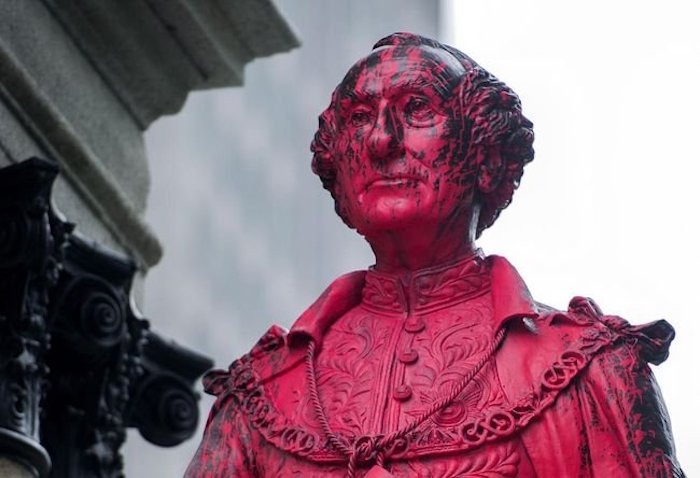
From the Frontier Centre for Public Policy
By Tom Slater, editor of Spiked.
If you – like me – loathe authoritarian, faux-progressive scolds, it’s actually been a good few years. I know it might not seem like it, with the ‘Queers for Palestine’ contingent currently running riot on American university campuses, but hear me out. Across the Anglosphere, one politician after another, beloved by the media but increasingly disliked by the public, have exited the stage, often jumping before they were pushed.
This week, we bid farewell to the SNP’s Humza Yousaf, whose year-and-a-bit-long premiership in Scotland produced more scandals and disparaging nicknames – Humza Useless, Humza the Hapless, etc – than it did any positive legacy. In the end, he proved himself to be as illiberal as he was inept. His Flagship policy, the Orwellian, broad-sweeping Hate Crime Act, alarmed voters and sparked a tsunami of spurious complaints, many of them about Yousaf himself. We can only hope it will now collapse under the weight of its own absurdity. (One thing’s for sure, voters are furious about it: only one in five Scots wants the Hate Crime Act to stay.)
Then, Humza managed to accidentally collapse his own government. He was apparently surprised to learn that his decision last week to suddenly terminate his party’s coalition agreement with the Scottish Greens –following some internal friction over trans and environmental issues – left the Greens angry and unwilling to prop up his minority government. As his short reign ends, Yousaf has at least managed the incredible feat of being even more unpopular than the leaders of the widely disliked Tories and the crackpot Greens, with an approval rating of -47. Yousaf – who was crowned first minister by SNP members and never gained a mandate from the people – was in negative numbers for all of this tenure.
Only in March, democrats were also toasting the demise of another despised, virtue-signalling leader who owed his position to elite politicking rather than democracy. Namely, Leo Varadkar. He became Irish taoiseach in 2017, after Fine Gael made him party leader. Even then, he had to rely on his support within the parliamentary party – in Fine Gael’s leadership-election process, the politicians are given much more weight than the members – given the membership voted two-to-one for his opponent. When Varadkar led his party to the polls in 2020, Fine Gael actually lost seats. Only by getting into bed with Fianna Fáil, his party’s supposed bitter rival, was Varadkar able to cling on to power.
Like Yousaf, Varadkar was a visionless leader who came to see superficial ‘social justice’ as his route to a legacy. While nominally on the centre-right economically, he was credited by international media with ‘Ireland’s transformation into a secular progressive state’. He clearly warmed to this image of himself, even if the Irish people did not. ‘We have made the country a more equal and more modern place’, he said in his resignation speech (my emphasis), ‘when it comes to the rights of children, the LGBT community, equality for women and their bodily autonomy’. This notion that Varadkar’s Ireland – like Yousaf’s Scotland – needed to be dragged kicking and screaming into the 21st century, that voters and their values desperately needed a politically correct makeover, gave the semblance of substance to his otherwise hollow premiership.
Ireland’s historic 2018 referendum, in which 66 per cent voted to overturn one of the Western world’s strictest abortion bans, was indeed a seismic blow for freedom. But Varadkar can hardly take credit for the decades of grassroots campaigning that got it over the line. His fingerprints were, however, all over the ‘family’ and ‘care’ referendums earlier this year, which produced two historic, humiliating defeats. Varadkar utterly failed to convince the people that this campaign to change the wording of the Irish constitution – to update the meaning of ‘family’ and to remove references to women’s role in the home – was anything other than an exercise in elite moral preening. He even insisted on holding the vote on International Women’s Day, just to heighten the sense of moral blackmail, even though doing so meant radically shortening the time the pro-amendments campaign had to prepare. The ‘family’ and ‘care’ amendments were rejected by 67 and 74 per cent of voters respectively. Varadkar tried to limp on, noting all major parties had backed the amendments. But this ballot-box revolt left his authority in tatters. He resigned two weeks later.
When Varadkar wasn’t talking down to voters, he was trying to censor them. Before he resigned, he had been toiling to pass Ireland’s own insanely draconian hate-speech bill, aimed at expanding restrictions on ‘incitement to hatred’ and adding gender to the list of ‘protected characteristics’, opening the door to criminalizing people for refusing to bow to the trans cult. To Scots, this may sound familiar. Indeed, it was as if Varadkar and Yousaf were competing to be the most censorious. Where Scotland’s Hate Crime Act criminalizes even private conversations in your own home (removing the so-called dwelling defence), Ireland’s proposed legislation would criminalize mere ‘possession’ of offensive material, including memes. From your phone’s camera roll to the family dinner table, no area of life is now safe, it seems, from the state censors. Having sailed through the Dáil in April 2023, the bill is now stuck in the upper house, after an almighty backlash from voters and civil libertarians. (Varadkar’s successor, Simon Harris, says he intends to table amendments to assuage voters’ concerns.)
Say what you will about Leo and Humza, at least they were occasionally – unintentionally – entertaining. Both were famously gaffe-prone. (Who could forget Yousaf’s tumble from his knee scooter, or Varadkar’s Monica Lewinsky joke in DC?) The same cannot be said for Nicola Sturgeon, the former Scottish first minister, Yousaf’s mentor and the walking embodiment of the prickly puritanism and mad identitarianism of our age. She looked upon the masses as reactionary filth – she once smeared her opponents as ‘transphobic… deeply misogynist, often homophobic, possibly some of them racist as well’ – all while ushering in the most reactionary agenda Scotland has seen for decades. Her already hated ‘gender self-ID’ reforms collapsed in 2023, when the public realized they would mean putting rapists in women’s prisons – which, by a grotesque quirk of fate, had become the ‘progressive’ position.
You could be forgiven for forgetting that the SNP was founded to achieve the ‘liberation’ of Scotland from the UK, rather than the ‘liberation’ of perfectly healthy genitals from the bodies of confused young people. It speaks to the grip of woke identity politics over the technocratic, centre-left imagination that Sturgeon was not only sidetracked but, in part, brought down by her dogged, fanatical pursuit of ‘trans rights’. Then again, social engineering has characterized much of the SNP agenda since it first came to power. Ending the Union has often taken a back seat to reforming Scots, from the SNP’s crackdown on offensive football chants to its profoundly creepy ‘named person’ scheme, which would have assigned a state guardian to every child had it not been held up in the courts on human-rights grounds.
One of the hallmarks of our woke, technocratic ruling class is that they increasingly define themselves against their own citizenry. Leaders today draw their moral authority not from the democratic endorsement of their electorates but from their ability to rise above the throng, to oppose our supposedly backward values. Skim-read the resignation speeches of Sturgeon, Yousaf and Varadkar and you’ll find them all peppered with rueful references to ‘populism’, ‘polarization’ and the supposed ‘toxicity’ of contemporary discourse. Voters are forever the implied villains of the piece, for refusing to just shut up and let the adults get on with governing.
All this speaks to why elites have become so insanely authoritarian in recent years. What we used to call illiberal liberalism, along with greenism and multicultural identity politics, has held a malign sway over our rulers for decades. But all these tendencies have been sent into overdrive over the past eight years. In the wake of Brexit and the rise of a more populist, democratic politics, our leaders have been confronted with the chasm that exists between their values and ours. And having failed to convince, they can only compel, coerce, punish. This self-righteousness has also bred an obnoxious, unabashed narcissism. In her resignation speech, Sturgeon used the words ‘I’, ‘me’ and ‘my’ 153 times. ‘Scotland’ appeared 11 times.
Covid added further fuel to this fear and loathing of the populace.
Politicians, already gripped by the panic about supposedly dim, irresponsible voters being manipulated by disinformation, gave full vent to their most authoritarian tendencies – locking us down and raging against any dissent. Arguably, no one did so as enthusiastically as New Zealand’s Jacinda Ardern, who was showered with praise by the globalist great and good for subjecting her own citizens to an unhinged ‘Zero Covid’ experiment. Naturally, she also became a campaigner for global censorship during this time, telling the United Nations in 2022 that ‘misinformation’ constituted a modern ‘weapon of war’, and calling on global leaders to confront climate-change deniers and peddlers of ‘hate’. She announced her resignation as prime minister and Labour leader in January 2023, just as she was enjoying her lowest-ever poll ratings while in office, all to the swoons of international media. Labour was wiped out later that year, in the worst election defeat of a sitting NZ government for decades.
Politicians seem to be going out of their way to alienate and infuriate voters, pursuing unpopular policies at the very same time as they demonize and clamp down on debate. On climate, they have embraced a programme of national immiseration, to be borne on the backs of the working classes, who are expected to just accept being colder, poorer and less mobile. On immigration, they have thrown open the doors to migrants and refugees on an unprecedented scale, without seeking public consent and without ensuring proper provision for – or vetting of – those arriving. On culture, they have embraced a new form of racism under the banner of anti-racism, and a misogyny and homophobia posing as ‘trans inclusion’. Meanwhile, voters are beginning to realise that all those calls to censor ‘hate’ and ‘misinformation’ are calls to censor them.
Even in Justin Trudeau’s Canada, a land long held up as ‘immune’ to populism, a backlash is stirring. The Canadian premier embodies woke authoritarianism in its most cartoonish form. When, in 2018, a woman confronted him at a corn roast about Canada’s enormous influx of refugees, he accused her of ‘racism’ to her face. Hell, he once corrected a woman who said ‘mankind’ instead of ‘peoplekind’. Worse still, his outrageous clampdowns on dissent make his contemporaries look subtle by comparison. When truckers rebelled against Covid mandates, he invoked emergency powers to freeze their bank accounts, break up their rallies and forcibly clear the streets. Of course, he’s also now trying to pass his own piece of censorship legislation, Bill C-63 – which, among other alarming provisions, would allow for people to be placed under house arrest if they are deemed likely to commit a hate crime. You know, like ‘precrime’ in Philip K Dick’s The Minority Report. Incidentally, Trudeau’s Liberal Party is currently trailing the Conservatives by a steady 19 points in the polls.
Wokeism. Climate extremism. Kindly authoritarianism. This is now the operating system of Western, ‘centrist’ politics. Take Joe Biden, America’s somnambulant president. At the 2020 election, even anti-woke liberals insisted this scion of the old Democratic establishment – a man so old he can’t even be slurred as a Boomer (he’s actually Silent Generation) – was the man to return America to normality, before the BLM riots and MAGA mania. ‘If you hate wokeness, you should vote for Joe Biden’, declared a piece in the Atlantic, arguing that Trump is to the culture war what kerosene is to a dumpster re, fueling the woke extremes. That take has aged like milk. On his first day in office, Biden signed sweeping Executive Orders on ‘racial equity’ and gender ideology. He later tried to apportion Covid relief on the basis of race. He’s a Net Zero zealot. He has allowed the justice system to be weaponised against his opponents. He invited Dylan Mulvaney to the White House, FFS. Biden’s return to ‘normalcy’ has been so successful millions of Americans are starting to wonder if Donald Trump might actually be the saner choice.
Everywhere, political leaders are pursuing the same batshit, authoritarian policies and everywhere they are colliding with reality – and the electorate.
Yousaf, Varadkar, Sturgeon and Ardern may have stepped down, but they did so in the face of growing public fury. Biden and Trudeau may not get the same privilege. Plus, while technocratic centrists remain in power or the ascendancy in various nations, they are at least being forced to adapt, albeit insincerely, to the new political reality – one in which voters are increasingly unwilling to put up with the punishing green policies, out-of-control transgenderism and woke censorship that have been rammed down their throats for years. And so, Labour’s Keir Starmer has suddenly worked out what a woman is. The SNP is watering down some of its ludicrous. Net Zero targets. Welsh Labour is paring back its more insane anti-car policies. The Irish government is finally, tacitly, admitting that it has let migration and asylum get out of control (albeit by just blaming it on the British).
The new authoritarianism is far from defeated. It is a feature, not a bug, of our technocratic ruling class. Worse than that, it is what gives our leaders meaning. The conviction that they are saving the world from a climate armageddon, that they are the protectors of all those supposedly easily offended minorities, that they must censor and re-educate the masses for our own good, has provided moral purpose to an otherwise simpleminded and disorientated elite. It won’t be easy to dislodge this stuff. But as one political leader after another exits the stage, having shredded their authority with voters, we see that the common sense of the demos remains our greatest defence against the insanity of the elites – if only we can find better ways to channel it. If there is hope, it lies in the masses. Always.
Tom Slater is editor of Spiked.
Automotive
Carney’s Budget Risks Another Costly EV Bet

From the Frontier Centre for Public Policy
GM’s Ontario EV plant was sold as a green success story. Instead it collapsed under subsidies, layoffs and unsold vans
Every age invents new names for old mistakes. In ours, they’re sold as investments. Before the Carney government unveils its November budget promising another future paid for in advance, Canadians should remember Ingersoll, Ont., one of the last places a prime minister tried to buy tomorrow.
Eager to transform the economy, in December 2022, former prime minister Justin Trudeau promised that government backing would help General Motors turn its Ingersoll plant into a beacon of green industry. “By 2025 it will be producing 50,000 electric vehicles per year,” he declared: 137 vehicles daily, six every hour. What sounded like renewal became an expensive demonstration of how progressive governments peddle rampant spending as sound strategy.
The plan began with $259 million from Ottawa and another $259 million from Ontario: over half a billion to switch from Equinox production to BrightDrop electric delivery vans. The promise was thousands of “good, middle-class jobs.”
The assembly plant employed 2,000 workers before retooling. Today, fewer than 700 remain; a two-thirds collapse. With $518 million in public funds and only 3,500 vans built in 2024, taxpayers paid $148,000 per vehicle. The subsidy works out to over half a million dollars per remaining worker. Two out of every three employees from Trudeau’s photo-op are now unemployed.
The failure was entirely predictable. Demand for EVs never met the government’s plan. Parking lots filled with unsold inventory. GM did the rational thing: slowed production, cut staff and left. The Canadian taxpayer was left to pay the bill.
This reveals the weakness of Ottawa’s industrial policy. Instead of creating conditions for enterprise, such as reliable energy, stable regulation, and moderate taxes, progressive governments spend to gain applause. They judge success by the number of jobs announced, yet those jobs vanish once the cameras leave.
Politicians keep writing cheques to industry. Each administration claims to be more strategic, yet the pattern persists. No country ever bought its way into competitiveness.
Trudeau “bet big on electric vehicles,” but betting with other people’s money isn’t vision; it’s gambling. The wager wasn’t on technology but narrative, the naive idea that moral intention could replace market reality. The result? Fewer jobs, unwanted products and claims of success that convinced no one.
Prime Minister Mark Carney has mastered the same rhetorical sleight of hand. Spending becomes “investment,” programs become “platforms.” He promises to “catalyze unprecedented investments” while announcing fiscal restraint: investing more while spending less. His $13-billion federal housing agency is billed as a future investment, though it’s immediate public spending under a moral banner.
“We can build big. Build bold. Build now,” Carney declared, promising infrastructure to “reduce our vulnerabilities.” The cadence of certainty masks the absence of limits. Announcing “investment” becomes synonymous with action itself; ambition replaces accountability.
The structure mirrors the Ingersoll case: promise vast returns from state-directed spending, redefine subsidy as vision, rely on tomorrow to conceal today’s bill. “Investment” has become the language of evasion, entitlement and false pride.
As Carney prepares his first budget, Canadians should remember what happened when their last leader tried to buy a future with lavish “investment.”
A free economy doesn’t need bribery to breathe. It requires the discipline of risk and liberty to fail without dragging a country down. Ingersoll wasn’t undone by technology but by ideological conceit. Prosperity cannot be decreed and markets cannot be commanded into obedience.
Every age invents new names for old mistakes. Ours keeps making the same ones. Entitled hubris knows no bounds.
Marco Navarro-Genie is vice-president of research at the Frontier Centre for Public Policy and co-author, with Barry Cooper, of Canada’s COVID: The Story of a Pandemic Moral Panic (2023).
Business
Ford’s Liquor War Trades Economic Freedom For Political Theatre
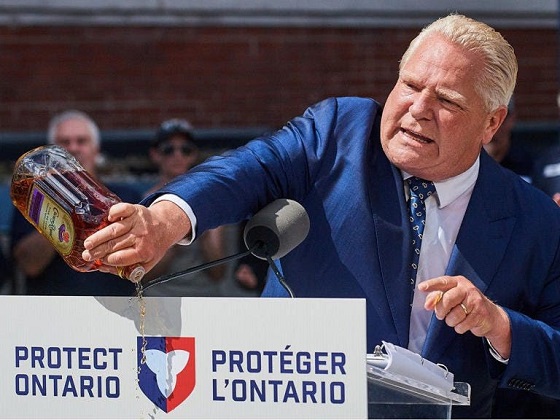
From the Frontier Centre for Public Policy
By Conrad Eder
Consumer choice, not government coercion, should shape the market. Doug Ford’s alcohol crackdown trades symbolic outrage for sound policy and Ontarians will pay the price
Ontario politicians have developed an insatiable appetite for prohibition. Having already imposed a sweeping ban on all American alcohol, Premier Doug Ford has now threatened to remove Crown Royal, Smirnoff and potentially other brands from LCBO shelves. Such authoritarian impulses reflect a disturbing shift in our political culture—one that undermines economic prosperity and individual liberty.
After Diageo, the multinational behind brands like Crown Royal and Smirnoff, announced in August that it would close its Amherstburg, Ont., bottling facility, affecting 200 workers, the political response was swift. NDP MPP Lisa Gretzky urged the government to retaliate by pulling Crown Royal from LCBO shelves. Days later, Ford dramatically dumped a bottle of the whisky during a press conference, signalling he might follow through.
Now, the premier has escalated the threat, vowing to remove Smirnoff and potentially other Diageo products.
These gestures may make headlines, but they come at a cost. They undermine business confidence, discourage investment, and send the wrong message to employers. More fundamentally, they reflect a poor understanding of how free societies settle disputes and make decisions.
To understand what’s at stake, it helps to consider the two basic mechanisms available to democratic societies: the marketplace and the ballot box. At the ballot box, citizens vote once, and majority rule determines a single outcome. The marketplace, by contrast, allows people to vote continuously with their dollars. Individuals make countless choices reflecting their own values and priorities. You get what you choose—without overriding anyone else’s preference.
There’s a role for government in correcting market failures, where there’s fraud, monopoly power or public risk. But banning legal products simply because of political displeasure with a company’s decision is not market correction. It’s coercion.
Diageo’s decision to close a facility may be unfortunate, but it doesn’t involve deception, unfair dominance, or harm to the public. Bans aren’t rooted in sound principle; they’re political, plain and simple.
Some argue the government is justified in acting to protect Ontario jobs. But that line of thinking is short-sighted. If job protection alone warranted banning products, we’d resist every innovation or trade deal that disrupted the status quo. Sustainable job growth depends on encouraging investment and innovation, not shielding every position from change.
The appropriate response to plant closures is policy reform, not retaliation. Ontario should focus on creating an environment where businesses want to invest and grow. That means fostering a stable, competitive business climate with clear rules, reasonable taxes, and efficient regulation. Threatening companies with bans only creates uncertainty and drives investment elsewhere.
With Ontarians spending $740 million annually on Diageo products, removing them from store shelves would impose real economic costs. Consumers would face fewer choices, weaker competition, and higher prices. Restaurants and retailers would be forced to adjust. The LCBO, Ontario’s government-run liquor retailer, would lose sales.
This isn’t hypothetical. The province’s ban on American alcohol is already projected to block nearly $1 billion in annual sales, while doing nothing to benefit Ontario consumers. The LCBO is serving political interests, not the public.
Supporters of such bans often reveal their lack of confidence in public opinion. Rather than persuade others to boycott a product voluntarily, they demand that government enforce a blanket restriction.
There’s a better way. Consumer-led boycotts offer accountability without coercion. They allow individuals to act on their beliefs without forcing others to comply. And they tend to be more effective, as companies respond faster to falling sales than to political theatrics.
But the issue at hand goes beyond liquor. It’s about whether elected officials should impose a single set of preferences on everyone, or whether citizens are trusted to decide for themselves.
Each new ban makes the next one easier to justify. Over time, these interventions accumulate and normalize government interference in private choice. Unlike consumer preferences, which can shift quickly and reverse, government prohibitions often persist. The LCBO’s century-old structure is evidence of how long some policies endure, even when they no longer serve the public interest.
This isn’t a call to eliminate government’s role. But it is a call for principled governance, the kind that distinguishes between legitimate oversight and overreach rooted in symbolism or political frustration.
Ontario’s government would do better to focus on long-term prosperity. That means building an economy where investors feel welcome, businesses can grow, and consumers are free to choose.
Ontarians are perfectly capable of making their own choices about which products to buy and which companies to support. They don’t need politicians like Ford making those decisions for them.
Conrad Eder is a policy analyst at the Frontier Centre for Public Policy.
-
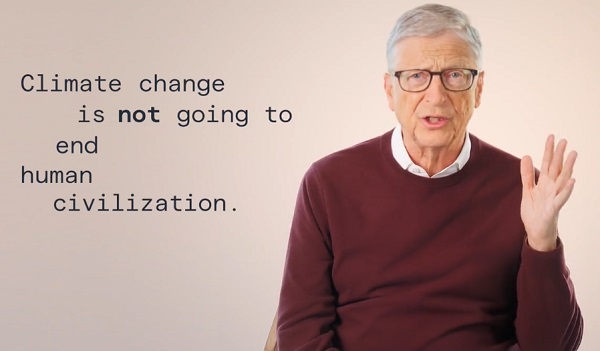
 Environment12 hours ago
Environment12 hours agoThe era of Climate Change Alarmism is over
-

 Business18 hours ago
Business18 hours agoYou Won’t Believe What Canada’s Embassy in Brazil Has Been Up To
-
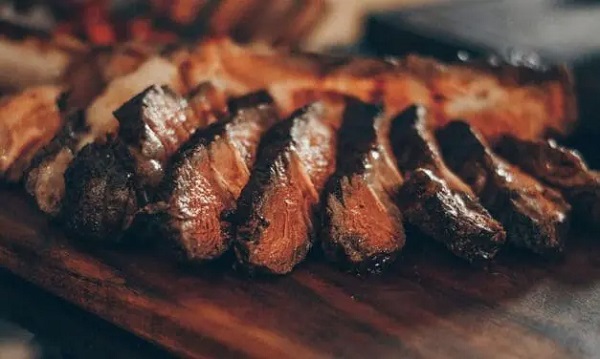
 Agriculture2 days ago
Agriculture2 days agoCloned foods are coming to a grocer near you
-

 International2 days ago
International2 days agoSagrada Familia Basilica in Barcelona is now tallest church in the world
-
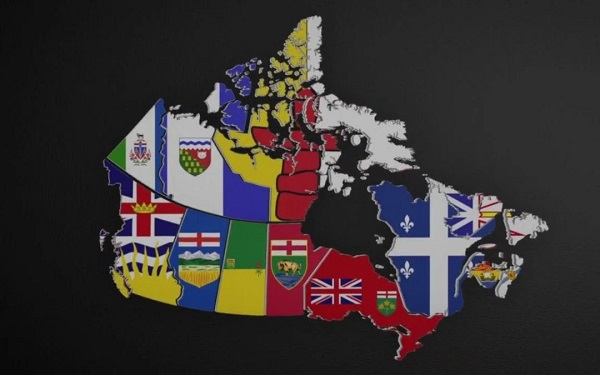
 Fraser Institute2 days ago
Fraser Institute2 days agoOttawa continues to infringe in areas of provincial jurisdiction
-

 Alberta2 days ago
Alberta2 days agoGondek’s exit as mayor marks a turning point for Calgary
-

 Automotive18 hours ago
Automotive18 hours agoCarney’s Budget Risks Another Costly EV Bet
-

 Business16 hours ago
Business16 hours agoMystery cloaks Doug Ford’s funding of media through Ontario advertising subsidy




